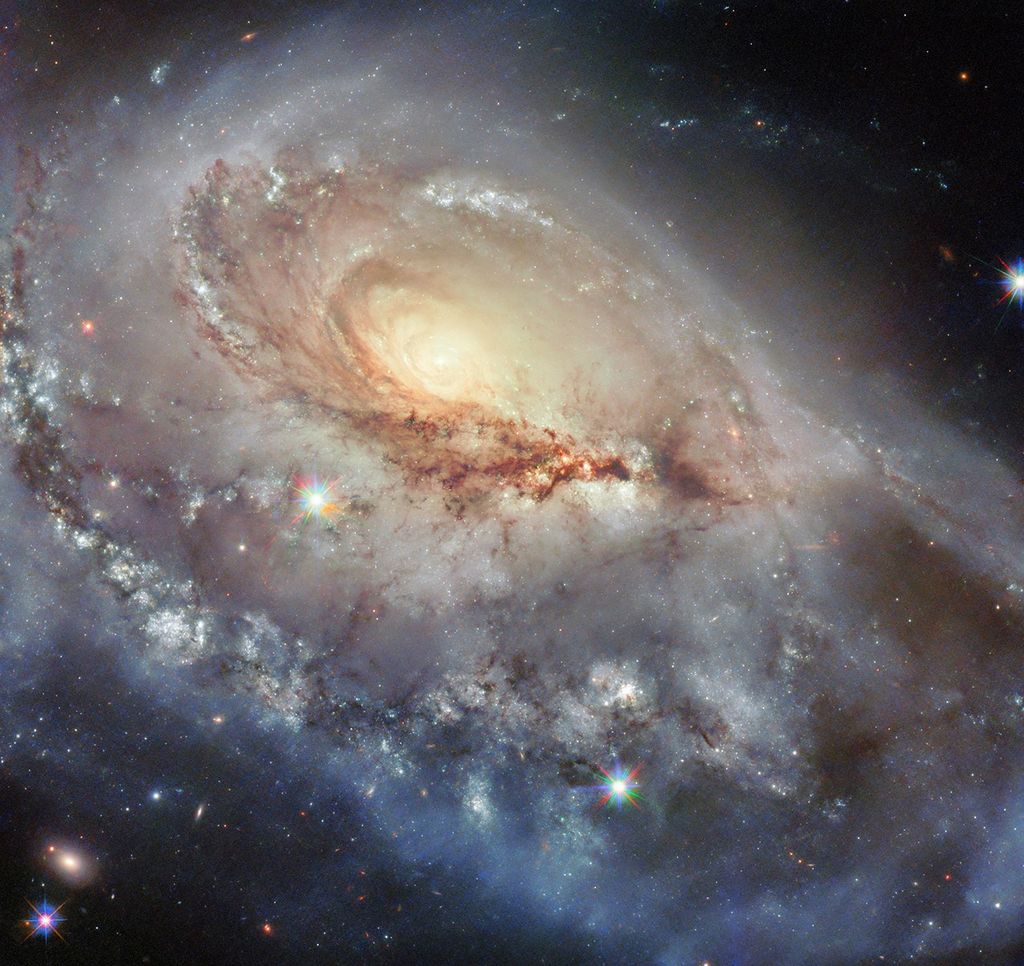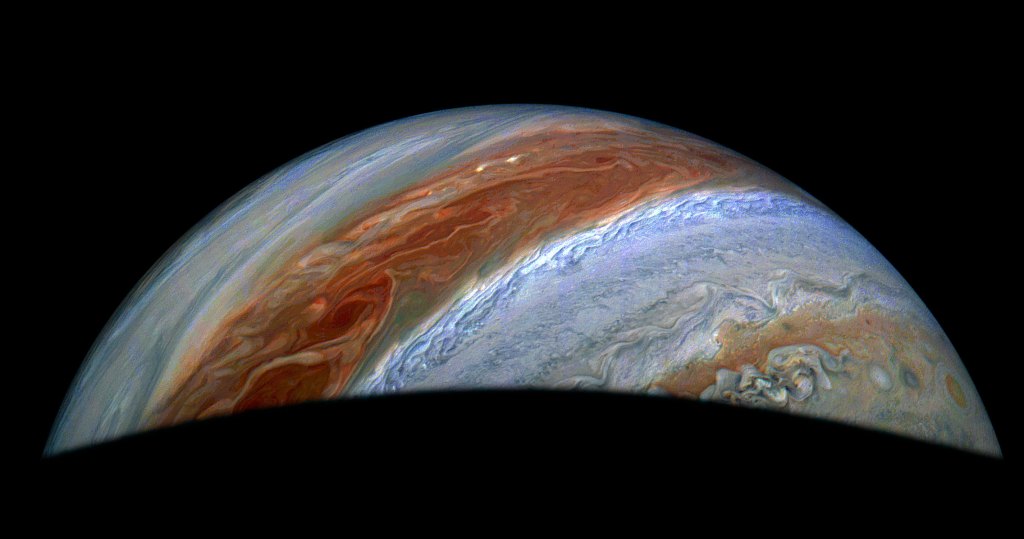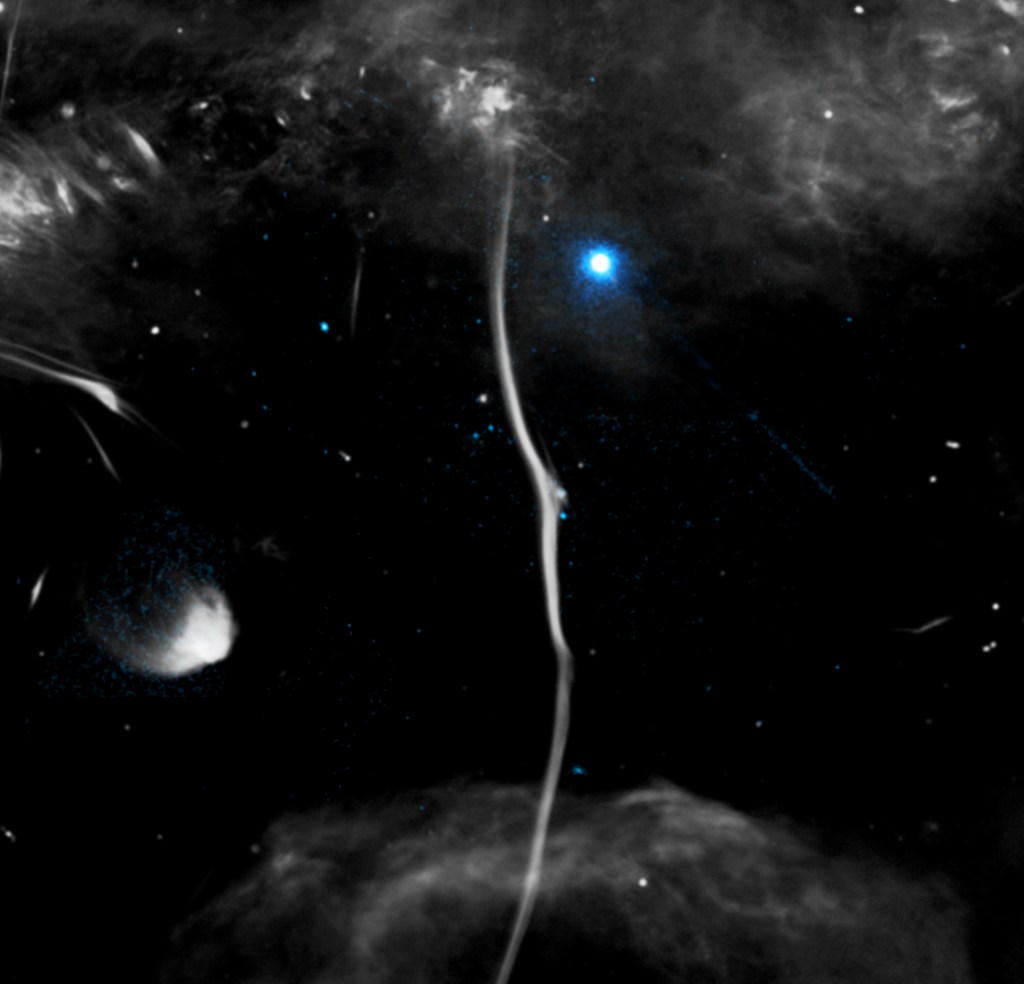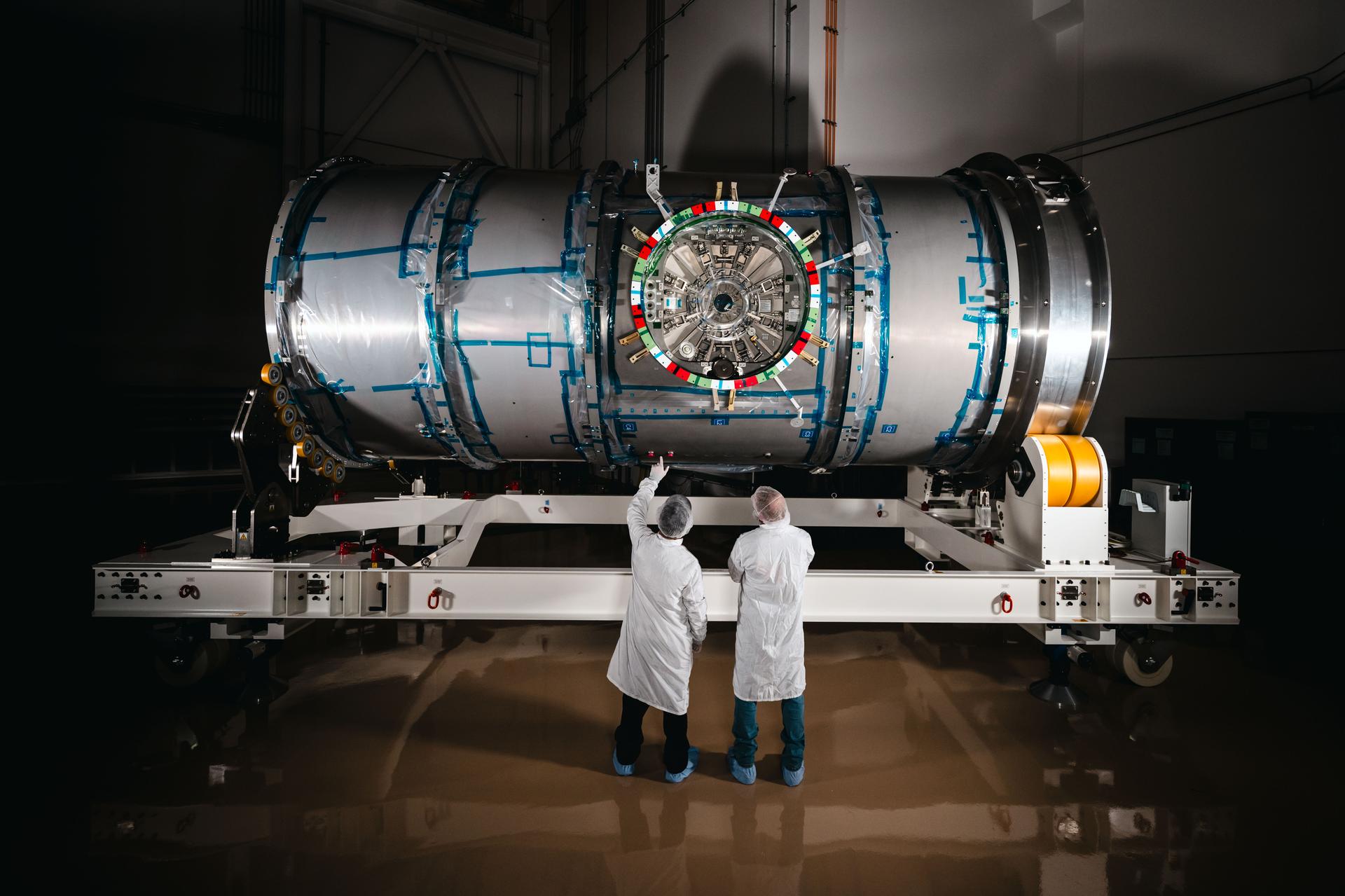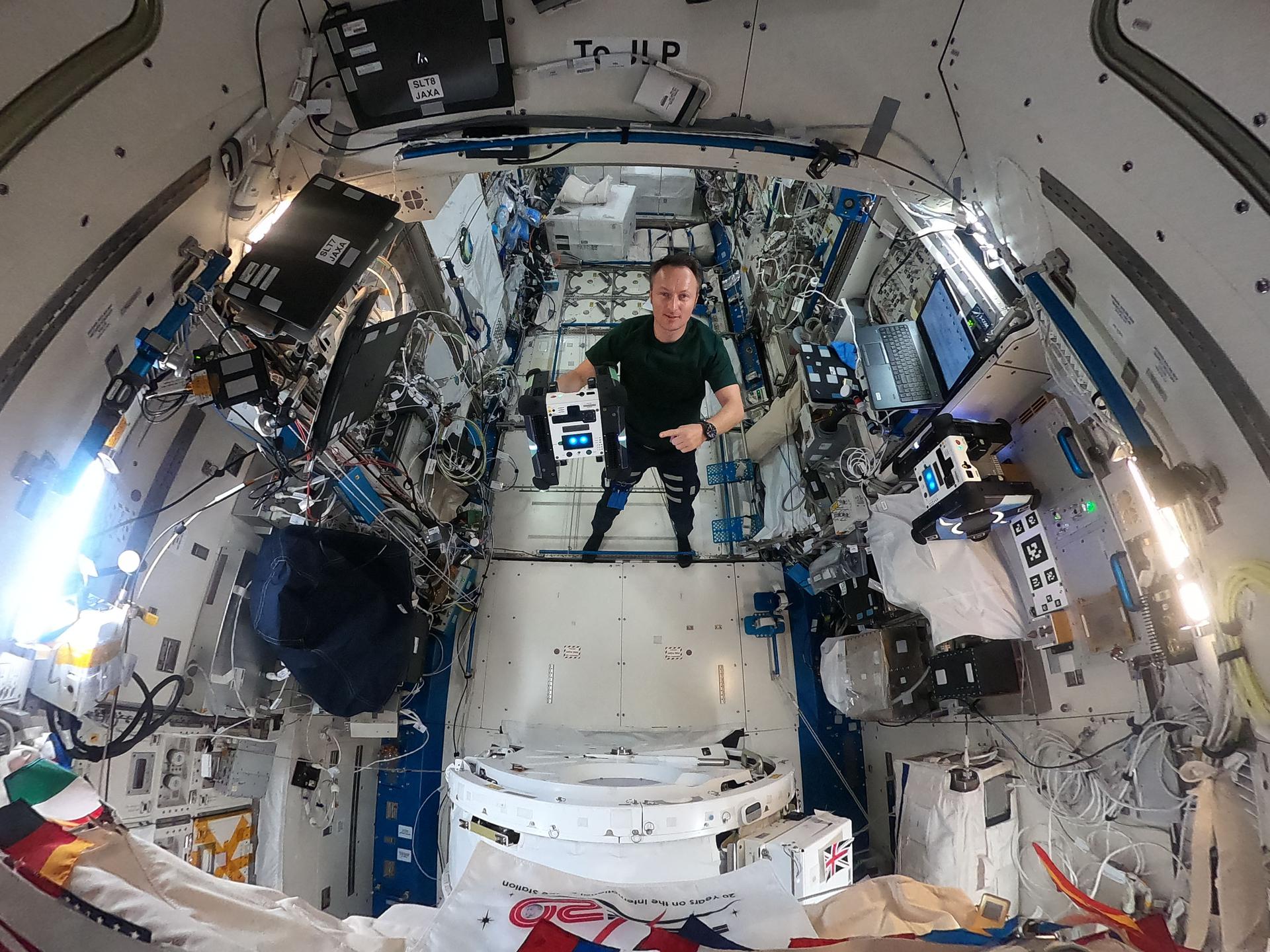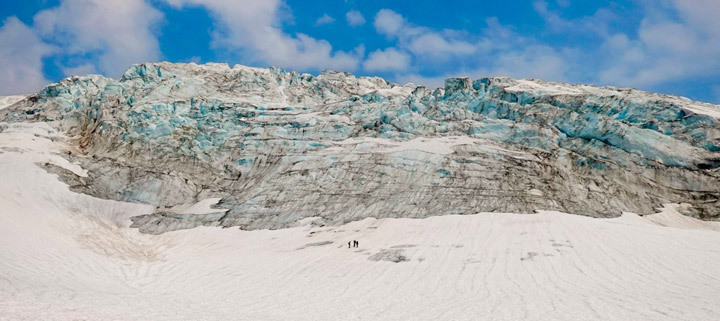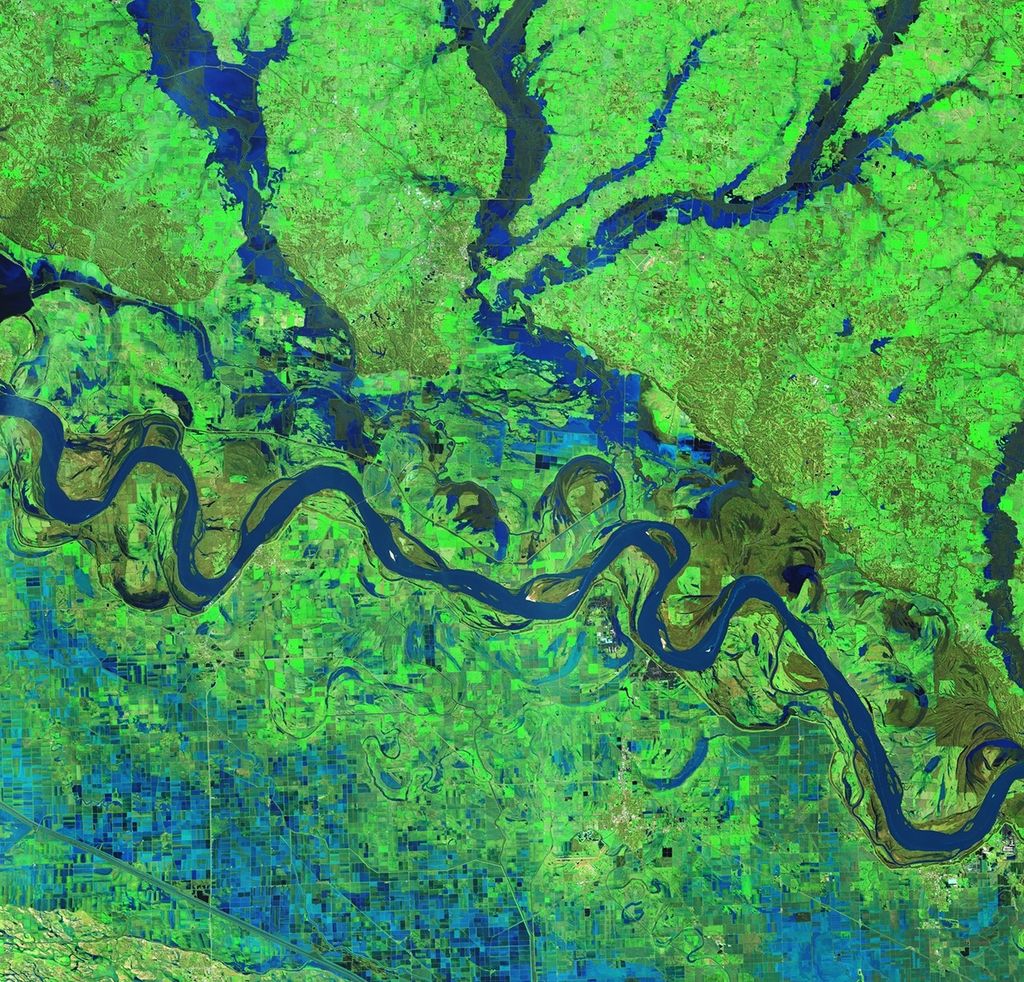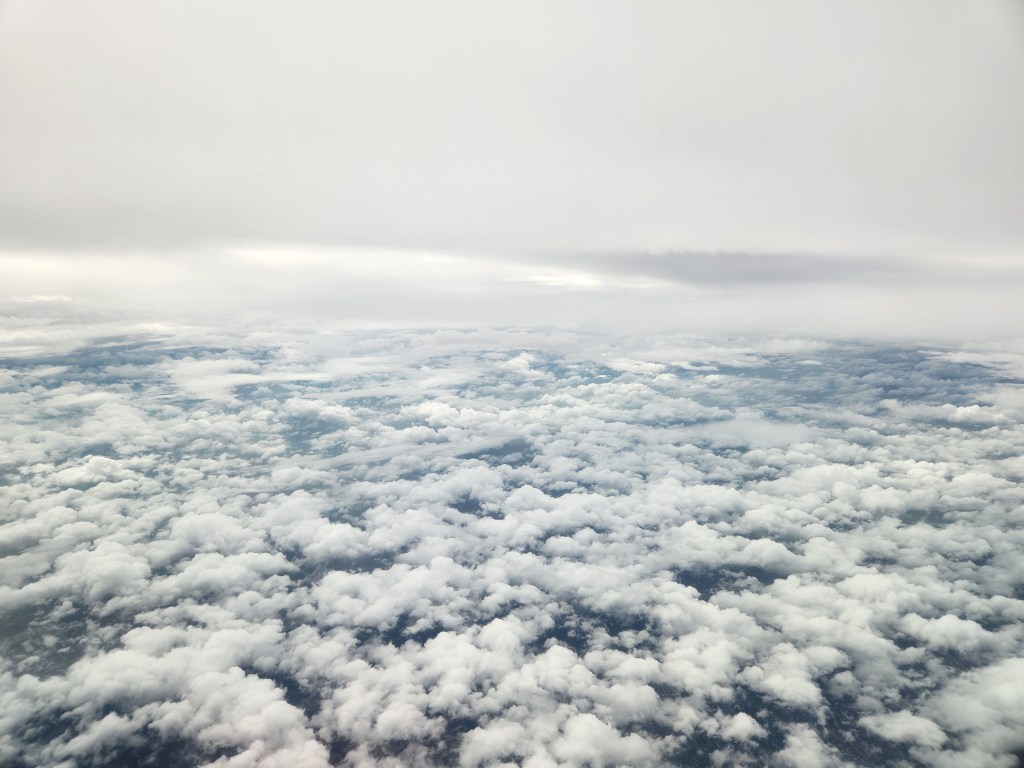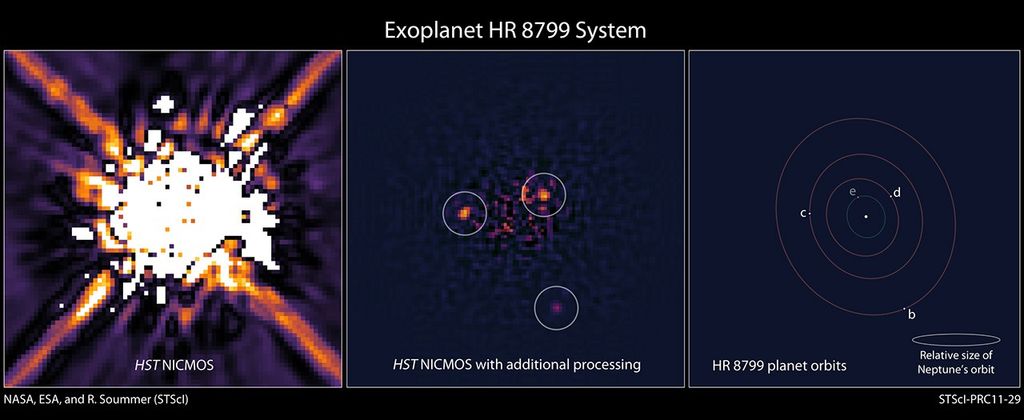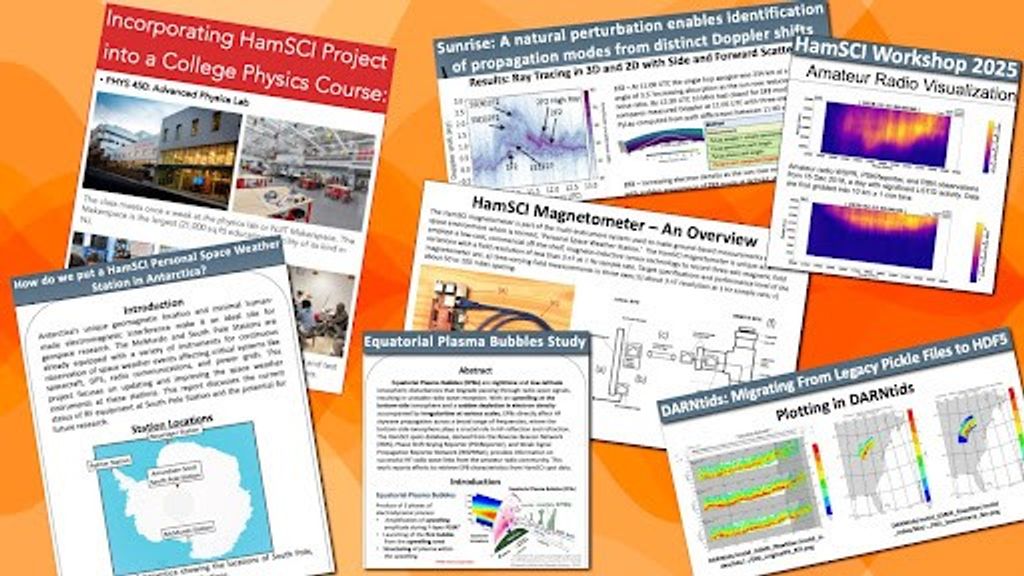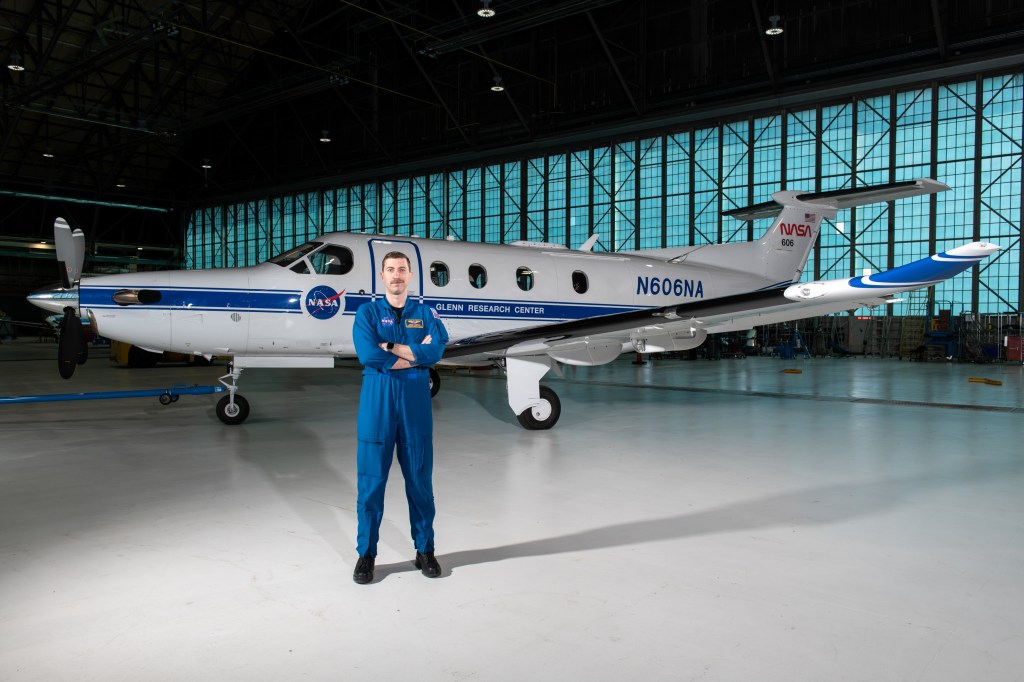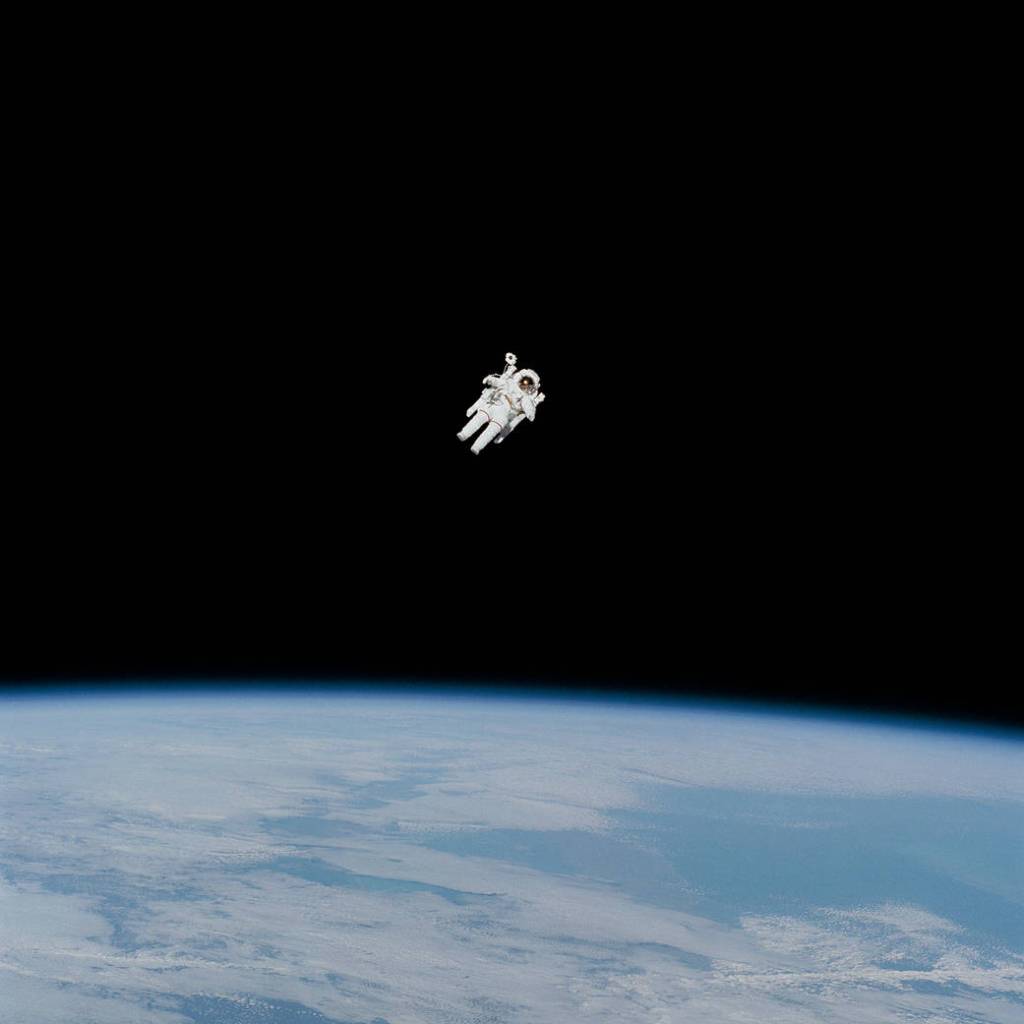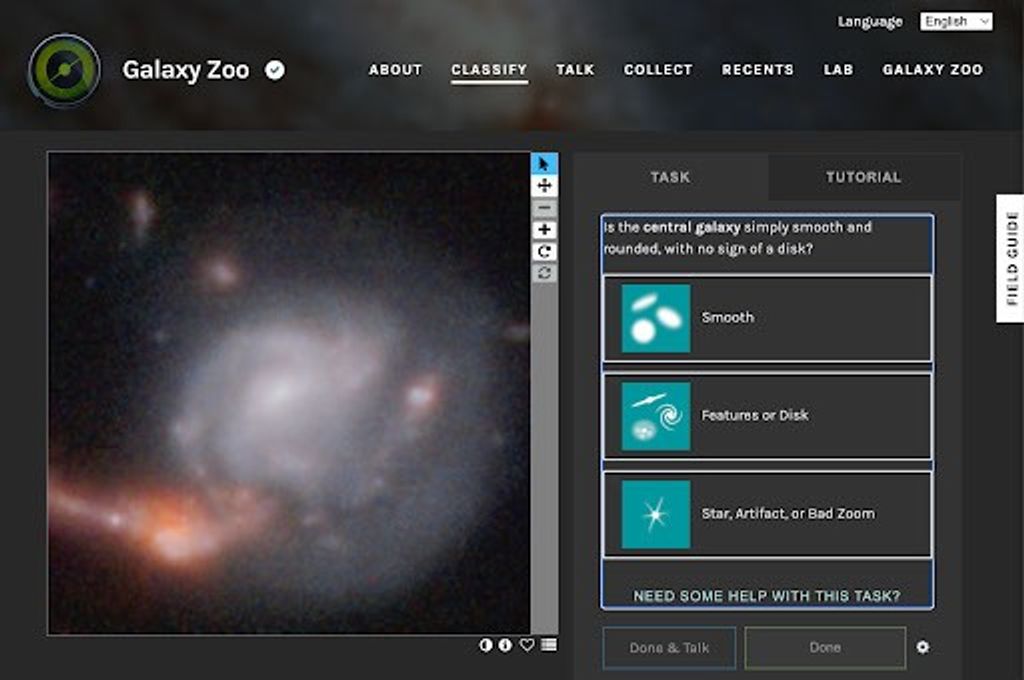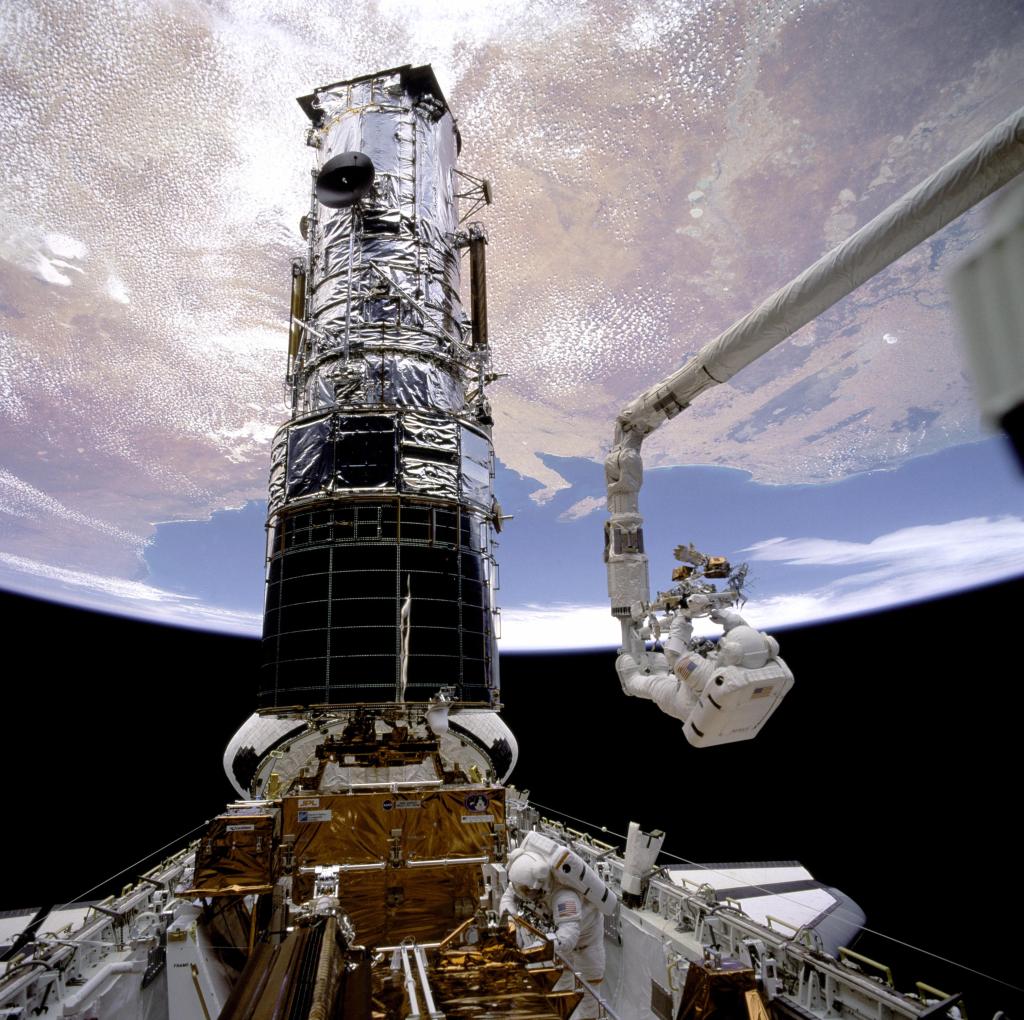Episode description:
Life all over the planet—even far from the coasts—depends on the oceans. A pair of NASA satellites, PACE and SWOT, is giving us a fresh look at Earth’s water. PACE tracks color changes driven by tiny plankton, which give us a big-picture view of ocean life. By measuring sea level height from space, SWOT shows ocean currents and other features in new detail. NASA scientists Cecile Rousseaux, Kelsey Bisson, and Josh Willis dive into new research with a lot of color and a little bit of rock and roll.
 [Music: Curiosity by SYSTEM Sounds]
[Music: Curiosity by SYSTEM Sounds]
PADI BOYD: Hey space nerds. I’m your host Padi Boyd.
JACOB PINTER: …And I’m your host Jacob Pinter. And this is NASA’s Curious Universe. Today on the show, it’s the second episode of our Earth series.
Last week, we introduced you to NASA’s long history of studying our home planet from above.
PADI: This week, we’re diving in… to its oceans…
[SFX: Waves crashing]
JACOB: That’s right! I’m a natural-born landlubber. I grew up far from the coast. But Earth is an ocean planet. So it’s time to get our feet wet.
PADI: We’re going to hear about two different NASA missions working together to understand how our oceans function… both physically and biologically.
JACOB: This is one of the biggest understatements of all time, but … Earth’s oceans are crazy complicated. They cover two thirds of our planet’s surface.
Currents carrying heat underwater affect local climates on land worldwide… determining where we can live and grow food.
PADI: And our oceans are also full of floating plant-like organisms known as phytoplankton … they generate some of the oxygen we breathe.
The oceans also absorb some of the carbon dioxide that factories, fires, and cars emit into the atmosphere.
And as ice sheets melt and the seas rise, our lifegiving oceans also threaten to flood some coastal cities.
JACOB: Now, as huge and complex as our oceans are… people across the world study them in all kinds of ways.
But NASA has a unique view. It’s a lot to understand and explain. But NASA is on the job.
OK Padi, I’m gonna head below-decks. I’ll be back later. But you’re the captain now.
[Music: Into The Calm by Thomas Trueman]
CECILE: I think the majority of people think of the ocean as the vacation spot, something along those lines. [laughs]
CECILE: But their role is so critical to us being alive on this planet, right.
CECILE: I’m Cecile Rousseaux. I work at the ocean Ecology Lab at NASA Goddard Space Flight Center.
PADI: At NASA, a lot of our scientists look out into space… at stars or exoplanets. But Cecile uses NASA spacecraft to look down… at Earth.
After all, as we heard in the last episode… we know less about the depths of our oceans than we do about some planets!
From way up, our home planet is a blue marble. Sure, there are white wispy clouds, and those green and brown landmasses we live on…
But more than two-thirds of our planet’s surface is blue… ocean.
Cecile spends a lot of time at NASA thinking about the many shades of blue in that watery expanse. Color is kind of how she got interested in science in the first place.
CECILE: You know, every child goes through a period of whys. I did that extensively. Sorry, mom and dad, but I always wanted to understand why the clouds were blue and why the trees were green.
PADI: And it turns out color is a key lens we can use to study our oceans .
Cecile is quick to point out that if you look closely, there are actually a whole lot of colors in the sea.
CECILE: It’s amazing, you can have it almost every color. You can have blue, green – that’s very common – brown…
PADI: Blue, green, brown… that’s just the start…
CECILE: You can also have red ocean…
CECILE: You can have also water that looks almost like milk color.
PADI: Looking at these swirling colors from space isn’t some art project. What causes those greens, browns, reds and blues actually has huge implications for the health of our oceans and the existence of all life on Earth.
Why? It involves some of the teeniest forms of life that exist on Earth.
[Music: Argosy by Ganapathy]
CECILE: No one knows about this. It’s like a secret, that you can look at a drop of water, and there’s actually thousands of stuff in there.
PADI: That “stuff” … is phytoplankton. In big enough numbers, these microscopic critters can stain the ocean red, green or brown, depending on their species.
And they don’t just float around… they do stuff. Stuff that can affect our lives here on land in pretty dramatic ways.
So NASA is very interested in keeping an eye on phytoplankton.
The word “plankton” comes from the Greek word for “wanderers.” They drift through the oceans. But Cecile has another name for them:
“Little fighters.”
CECILE: Yeah, phytoplankton, little fighters [Laughs]
PADI: That’s because these microscopic lifeforms play an outsized role in regulating Earth’s climate.
You’ve probably never seen a phytoplankton… unless you’ve looked at a drop of seawater under a microscope. But they’re essentially tiny plants.
Cecile likes to think of them as very tiny underwater trees…
CECILE: Now the reality is that in your trees, you have oaks, you have pine trees, you have all sorts of different – and it’s the same in the ocean with phytoplankton, you have several different species. And each of those species has different colors, different shapes. // It’s amazing how detailed and in my opinion, beautiful they are…
PADI: The “phyto” in phytoplankton means plant. Just like plants and trees do on land, all these tiny ocean trees are drifting around, photosynthesizing… turning sunlight into food.
Then they become food for other ocean life… the basis of the ocean food chain.
CECILE: If you like to eat fish or shellfish // the only way that can happen is if you have phytoplankton.
PADI: And there’s a very important side effect of photosynthesis… one you learned in school, even if you don’t remember… oxygen.
In fact, life in the ocean is what first oxygenated our atmosphere, about 2 and a half billion years ago, making life on land possible.
CECILE: So if you like to breathe, you know, you should really care about ocean and phytoplankton, but also they take up carbon dioxide.
PADI: That’s the carbon dioxide we emit with our cars and factories… the greenhouse gas that’s accumulating in our atmosphere and trapping heat from the Sun, warming things up.
CECILE: Well, the thing that we very often don’t hear is that phytoplankton is actually a critical player in taking up that carbon dioxide and sinking to the deep ocean.
PADI: Phytoplankton consume about as much carbon dioxide as all the world’s forests and plants combined.
When phytoplankton get eaten, they ultimately end up at the bottom of the ocean. And they take the carbon they’ve sucked down from the atmosphere with them.
Scientists call this system Earth’s biological pump.
CECILE: So if we didn’t have them, we probably would be in a lot worse spot right now.
[Music: Vertical Rise by Handels]
PADI: There are more than 100,000 different species of phytoplankton… more than all the species of tree on land. They number in the quadrillions.
And while some of them store carbon dioxide, feed fish and give us oxygen, not all of them are working in our best interest.
When waters get too warm or too full of nutrients, certain species can explode in population, causing a toxic algae bloom. Sometimes those show up as a dark red color… we call that… a red tide.
That’s dangerous for anything that lives in the water. And harmful algae blooms can affect us too… poisoning fish and shellfish we rely on for food… making people sick.
Now, individual phytoplankton are tiny… remember, they’re so small they’re invisible to the naked eye. You need a microscope to study them here on Earth.
So it might sound a little crazy to try studying them from space. But it turns out the best view of the ocean’s tiniest players is actually from orbit. And it all comes back to color.
Phytoplankton may be tiny, but there are tons of them in the sea.
When they come together in those algae blooms? You can see them from space. If you know what colors to look for, you can even identify individual species and map their movements.
PACE launch video: 5… 4… 3… 2… 1…
PADI: And that’s where the first key NASA ocean spacecraft comes in. It’s called the Plankton, Aerosol, Cloud, Ocean Ecosystem satellite, or PACE, for short.
PACE launch video: And liftoff of Falcon 9 carrying NASA PACE. Go Falcon, go NASA LSP.
CECILE: With PACE, we’re going to be able to actually look at who is in the water, what type of phytoplankton there is in the water, and therefore, what function of the ocean are going to go up and down depending on the conditions. And that’s all achieved by looking at the color of the ocean.
PADI: And when we talk about different colors of the ocean, we are talking about extremely subtle differences…
Until the launch of PACE, these differences were almost impossible for scientists to decipher.
These phytoplankton don’t grow in distinct blobs; they mix around a lot in ocean currents.
CECILE: Yeah, that’s the challenge [laughs] when they mix together, and they do that!
PADI: So how do you tell them apart? Previous spacecraft tried, but they had limits.
[Music: Molecular by Ireland]
CECILE: Imagine a box of five crayons, right? So you have five colors, and you use that to color something. And with PACE, we have moved from that box of five crayons to now more than 100 different colors. And because of that, we are able to look at very subtle difference in the color of the ocean, which we could not do before. So it was either blue, or brown, or green. Now we can be, Oh, is it slightly more green? Is it slightly more bluish green? And so we are able to really distinguish small changes in the color. And those changes can then be translated in the change of phytoplankton composition as well as other things in the water.
PADI: Those colors come from pigments… pigments that phytoplankton produce. One that you might be familiar with is chlorophyll, which lets plants photosynthesize. It’s always green. But there are lots of other pigments, too.
KELSEY: So it’s very critical for a sensor to be able to see over the you know, the over the visible spectrum and in the UV to detect these pigments better and then better understand phytoplankton communities.
PADI: That’s Kelsey Bisson, a project scientist for NASA’s Ocean Biology and Biogeochemistry Program who also works on PACE.
KELSEY: So if pure sea water is present, the ocean will be likely to be blue.
[Music: Garden of Synapses by Telegra]
KELSEY: When you start to add more phytoplankton, it takes on more of a greenish hue, greenish or brownish depending on different species that are present, because of the concentration of phytoplankton, which can be you know, 10s of 1000s per milliliter. Again, thinking about the size of a milliliter, there’s a lot there, they can change the color of the ocean.
PADI: Things appear different colors to us because the pigments they contain absorb and reflect different wavelengths of light.
Our eyes can only see a tiny fraction of wavelengths…
KELSEY: Yeah, so our eyes have adapted and evolved to see, you know, a portion of the visible spectrum, which is what we call visible…
PADI: But PACE can see across the spectrum… from the ultraviolet to the near-infrared…
…plus the visible spectrum sandwiched in between.
So PACE is way better at seeing small differences in color than we are.
KELSEY: We can’t detect nanometer scale type changes in the ocean. But the sensors that we develop at NASA can and they’re extremely sensitive, to be able to detect, to notice changes in ocean color, that have profound implications for ecosystems, but are not something that we can look at, maybe, and necessarily see. So it’s a really important asset that we have, I guess, in our toolbox.
PADI: PACE does that with a tool called the Ocean Color Instrument. Kelsey says you can think of it like a camera.
As it orbits around Earth, it uses the Sun as the flash!
Light bounces off the ocean’s surface, and different wavelengths get reflected by different plankton there.
The instrument snaps an image of the colors and converts it into data that scientists use to form a detailed picture of what colors are present at the ocean surface at any given time.
We’ve taken daily snapshots of our oceans from space for decades…
We’ve been able to see the colors move around… it’s like watching our oceans breathing!
But we’ve never seen the oceans like this.
KELSEY: Before PACE, you might be able to say, “OK, there’s a lot of chlorophyll in the water, therefore we have a bloom.” But it maybe was little trickier to understand what type of bloom and who was living in the water, and what that might mean for the fate of the ecosystem. With PACE, we’ll have, relative to our past, sensors, we have an unprecedented ability to do this.
PADI: PACE data are already helping fisheries and coastal managers map and forecast phytoplankton blooms….
Those data help people who rely on the ocean’s resources, and its health... and monitor its health… like mussel farmers who need to keep toxins out of their shellfish.
And PACE is also tracking other tiny things… like aerosols. Microscopic particles like smoke, dust, pollution, and sea salt in the atmosphere.
Kelsey doesn’t take any of it for granted. She grew up in Ohio, far from any ocean.
KELSEY: And sometimes I think of it as, you know, we want what we can’t have in some ways. And then when I finally saw the ocean for the first time, I think I was 15, which is quite late, but I fell in love.
[Music: Into the Calm by Trueman]
PADI: Now, she marvels every day that we have the ability to see microscopic life… stuff we can’t even see with our own eyes… from space.
KELSEY: I also really love that science can help us see what feels and is invisible to our eyes, you know, so if you were to collect a bucket of sea water or something, it might appear clear, but in each milliliter of seawater, it’s just absolutely teeming with life. You know, millions of cells that are living in that water, and those cells have profound impact on our lives. // That, to me, is so special. I think that feeling, that moment of, you know, looking at clear water, I guess, and then, and knowing what’s contained in that, and the fact that we can observe those processes from space is what keeps me excited, you know, truly every day to work on these things and think about the future of ocean science and ocean understanding that we can have.
KELSEY: I think there is truly no better time to be an oceanographer with the tools that we have, from space to explore and observe our oceans and understand and ask focused questions related to, you know, climate and society in that sense, in a technological sense, it feels like we’re in a renaissance.
JACOB: Hey Padi… I’m back. It’s wild to think about how something so small can have such a big impact. The PACE team likes to say they make the invisible visible, right? It’s a big promise but they really deliver!
PADI: Absolutely. OK Jacob, that was the story of one key NASA mission studying the ocean, but there’s a second part of this renaissance, right?
JACOB: Yes, so we’ve got PACE looking at what’s growing in the ocean… studying the ocean’s biology.
But there are other, physical factors that affect where that biology is. Like, what the sea levels are across the world.
And that’s where another key spacecraft in NASA’s fleet comes in. It’s called SWOT. That’s an acronym, which stands for “Surface Water and Ocean Topography.”
Josh Willis studies the oceans with SWOT and other NASA missions.
His official job title is… oceanographer at NASA’s Jet Propulsion Laboratory.
JACOB: How did you get interested in oceanography in the first place?
JOSH WILLIS: Well, I found my way to oceanography by failing out of physics. I was actually in graduate school in a physics program at University of California in San Diego, and I was really struggling to find a physics project that I wanted to do. And you know, my struggles were not just obvious to me, they were obvious to my professors too. And eventually, they thanked me for playing and asked me to move along, but in doing so, what I really realized was that I wanted to study something that I felt was important.
[Questioning Beyond by Ireland]
JACOB: Well, here’s something important:
Since 1880, sea level across the planet has risen about 8 inches.
By the end of this century… scientists expect sea level to rise another foot… or even more.
That is just one effect of the warming of our planet, caused by humans releasing greenhouse gases into the atmosphere.
Now, Josh has some unique, fun strategies to get people interested in his research, and you’re going to hear about one of those in a second.
Josh says, when he meets new people and talks about work… the conversation follows a pattern.
JOSH: I usually start by saying, I study global warming for NASA, and then immediately they have a bunch of questions.
JACOB: Like what?
JOSH: Well, like, How bad is it? That’s always the first one, how bad is it? And you know, the answer is, look, we’ve we’re changing our climate. The oceans are rising, the planets warming. You know, there’s still time to avoid the worst impacts, but we have to prepare for the ones that are in the pipeline.
JACOB: So I want to hear more about your research. I want to hear more about sort of the big picture and and what we’re learning about the Earth. But first, who is Climate Elvis?
JOSH: Well, Climate Elvis is my alter ego, born out of my love for sideburns and old music.
[Clip from “Climate Rock”: Sunday it was sunny, high of 73…]
JOSH: There was this contest, and it was for the Alda Center for Science Communication for several years, they had this contest called the flame challenge, and they asked scientists to explain a science concept and essentially an answer to a question asked by an 11 year old using a video, and I wrote a bunch of lyrics, and we put together a song and made a music video called the climate rock.
[Clip from “Climate Rock”L That’s climate. Oh, that’s the climate you got, baby. You take a bunch of weather and you average it together and you’re doing the climate rock…]
JACOB: Why is something silly like climate Elvis an effective way to talk about really serious science?
JOSH: I think it helps break the ice. You know, it’s sort of an unexpected approach, or at least it was unexpected when I made the video. There’s a lot more effort to kind of tell jokes about climate change, because I think it helps us normalize it, and we have to accept it before we can learn to deal with it. And so for me, climate Elvis was a way to help connect people with this topic that that, you know, was just kind of overwhelming in a lot of ways. Sometimes, even as a scientist, it’s overwhelming. It’s sort of like, gosh, you know, our footprint on the planet is just so much bigger than you can possibly imagine. How do we cope with that? Well, let’s write a song.
[Clip from “Climate Rock”: Oh yeah. Thank ya very much.]
JACOB: I would love to talk to you about sea level. So for starters, why is it important to know how high the sea level is?
JOSH: Of course, a lot of us live near the sea. That’s one reason. And as it rises, it threatens our infrastructure, you know. But there’s also a science reason for studying sea level rise. The oceans cover two thirds of the planet’s surface, and they absorb over 90% of the heat that we trap with our greenhouse gasses. So if you want to know where climate change is really happening, it’s happening in the oceans and sea level rise is the clearest, most robust measure of that.
JACOB: Is sea level hard to measure? There’s something about it that seems so simple, like it’s just, Where is the water? and that’s where the sea level is.
JOSH: Well, yeah, I mean. Some ways, you know, you put a ruler at the coastline, and that’s that’s sea level, right? In some ways, it is really easy to measure. The reason it’s hard to measure is because you have to measure it over two thirds of the planet. So a single yardstick isn’t quite enough. You really have to measure it everywhere in the world, if you want to see how the whole ocean and the whole climate is changing, and that’s what we do with satellites.
JACOB: When I think of the ocean, I imagine it like a gigantic bowl, basically.
[Music: Passing Moments by Chevalier]
JACOB: And you know, when I’m at home and I fill a bowl with water, the surface is level, and it sort of stays that way, consistently across the bowl. Does it work the same way in the oceans? And if not, like, what is it that makes it more complicated?
JOSH: Well, to a certain degree, it actually does work that way. The fact is, if you put water in one place in the ocean, it goes up everywhere. If we add ice from melting ice sheets in Greenland or in Antarctica, the water rises all across the globe. Now it doesn’t rise exactly the same everywhere, and there’s a lot of physics behind why. One reason is that the ocean currents literally tilt the sea surface as water moves across the planet. It’s sliding along the equator. It’s moving up the east coast of the United States. And these giant currents, those currents, literally tilt the ocean surface, and we can measure that tilt from space. The other thing that changes sea level is how warm the water is. If there’s a patch of water that’s very, very warm, well, water literally expands when it gets warm, so that warm patch will stand taller than a cold patch of water. So those things affect sea level. But there’s one more big one. It’s actually gravity whenever, whenever a chunk of ice falls off of Greenland, then it changes the gravity just a little bit, and the gravity was pulling that water towards the, it eye. That was pulling that that water towards Greenland relaxes a little bit, and itwhich changes the shape of the ocean a little bit.
JACOB: Tell me more about how we measure sea level from space, and what are the advantages of doing it that way instead of measuring it here on earth?
JOSH: Well, the biggest advantage for measuring sea level from space is that we can see the oceans all around the planet. We can cover almost like 90% of the world’s oceans in 10 days with a single satellite, and that gives us really an unprecedented look at how the whole world’s oceans are changing. So
JACOB: One NASA mission that helps with this is called SWOT, and I was hoping you can help me understand what SWOT is and what it does.
JOSH: Well, that’s right, there have been a long history of these missions going back to the early ’90s.
[Music: Nebula by Doherty]
JOSH: But a couple of years ago, we launched this new mission called SWOT. And SWOT is an acronymthat. It stands for Surface Water and, Ocean Topography, and it’s a little more fancy than our traditional satellites, which just bounce a radar wave off the ocean directly below it and have it come back up. This satellite uses two different radars, and it bounces waves between the two radars, and using the geometry between the two radars, you can figure out not just how far away the water is, but what angle it’s at. And so it actually lets you draw out a swath along the ocean. So you can think of this sort of like a printer. Your printer goes along, it prints one line at a time, and over time, it prints out the whole document. Well, SWOT kind of measures one line of sea level at a time, and as it flies along, it sweeps out a two dimensional map of the sea level. So instead of just looking at a single point right below the satellite, it’s literally making this 2d high resolution map of sea level. SWOT, all by itself, helps us see the ocean surface in a way we’ve never seen it before. Pace will also measure ocean color and a whole lot of other things in the atmosphere too. But using these instruments together, we can really begin to see how. The oceans are this complicated machine that move water around, moves heat around, affects the climate, affects the ecosystems, and really our our global ecosystem as a whole, which is so dependent on the world’s oceans.
JACOB: NASA gathers a lot of data about the Earth, including its oceans. When you step back as a as an oceanographer and as a climate scientist, what is the data telling us about the planet, and especially the oceans as a whole?
[Music: Mystery Unfolds by Mathild]
JOSH: The planet is really responding to us in a way that’s never happened before. Our footprint on the climate, on the oceans, on really, every aspect of the planet is, you know, unmistakable at this point, and it’s still growing. The oceans aren’t just rising. They’re rising faster and faster every decade. So the rise that we saw in the 90s was about two millimeters per year. In the 2000s it was about three millimeters per year, and now it’s over four and a half millimeters per year. So we’re seeing the planet change, and we’re seeing those changes take place faster and faster.
JACOB: What does it feel like on a personal level to study the climate and to keep uncovering this information that I would imagine is pretty heavy to have to think about all the time.
JOSH: Well, it is disturbing in a lot of ways, to look at our reach and our impact. It’s also exciting as a scientist, you know, we’re doing this incredible experiment with our planet. And you know, that sounds a little callous, but the experiment is fascinating. You know, we’re learning things about the way our planet works that we wouldn’t have learned otherwise. But the flip side is that we’re also causing changes that we can’t roll back. We’re not going to see sea level rise drop by any meaningful amount in our lifetimes, or probably the lifetimes of our children or children’s children. So we’re putting changes into motion that we can’t control anymore, and I think that’s definitely scary.
JACOB: If I understand, right, I would think that your job is to study what’s happening on Earth, and I’m not sure to what extent it includes, you know, solving all of our problems and and saving the world. But I think a lot of people want to know what they might be able to do to fix it, or even just to help a little bit. Do you have any advice for people like that?
JOSH: Yeah, you know my acting buddies, when I when I go off to do my day job, they say, All right, go. Keep saving the world. But of course, I’m not really saving the world. I’m just charting its destruction. I yYou know, mostly what we’re doing as climate scientists right now is trying to understand what’s happening. But there are people who are looking for solutions, and I think there are technical solutions that are not very far off. Some of them are already here. Another thing I think it’s important to do is to talk about it. I mean, I think the more we pretend it’s not happening, then the harder it is to find any change.
JACOB: The more NASA scientists I talk to, the more I find out that they have really interesting lives outside of the science that I do. And you perform as climate Elvis, you take improv classes. Why are those important skills for a scientist to have and and like, what have you learned doing those things that you think maybe other scientists could benefit from?
JOSH: Well, I think there’s a couple things you know. First off, you need a break or an outlet. I think you know, if you’re going to do something like study the climate for 20 or 30 or 40 years, then you have to have some means of just finding your happy place. And for me, my happy place is on stage. I’ve figured out. I think, you know, we tend to try and iron out all the emotion out of science, which is useful, because it’s important to be objective and approach problems with the. Aa clear perspective. Bbut at the same time, when we talk about our science, especially when we talk about it to people who aren’t scientists, if you don’t have any passion about it, or you don’t have an emotional connection to it, then it’s very hard for people to absorb it. And so to me, I really feel like going back to the theater has made me a better communicator, but not just with non scientists. I think it’s made me a better communicator with other scientists, and in a lot of ways, it’s made me a better scientist, too.
[Music: Unraveling Minds by Telegra]
JACOB: I’m drawing to the end of my list of questions here, one thing that we ask everyone we interview, since our show is called curious universe, is, what are you still curious about?
JOSH: Oh, I’m still curious about everything. I wouldn’t be a scientist otherwise. You know, to me, the defining characteristic of a of a scientist or someone who who wants to be a scientist is their sense of curiosity. I think that learning new things about the world, about how it works, about how and why the oceans are rising, how fast they’re rising. These are all things that I wake up in the morning and and wonder. And the cool thing about being a scientist is I know where to go look for the answers, so I’m still curious about everything really.
JACOB: Well. Josh Willis, I think the only thing left I can say is… thank you, thank you very much.
JOSH: Well, it was a big pleasure to be here. Thank you, Jacob, and I hope you’ll go out and find my Climate Elvis records.
JACOB: Josh Willis is based at NASA’s Jet Propulsion Laboratory.
Climate Elvis is, unfortunately, probably not at a record store near you. But you can sometimes catch Josh at a comedy club in L.A.
You can find more info about PACE, SWOT, and other Earth Science topics … at science.nasa.gov/earth/explore.
[Music: Curiosity by SYSTEM Sounds]
PADI: This is NASA’s Curious Universe. This Earth miniseries episode was written and produced by Jacob Pinter and Christian Elliott, with help from Julia Tilton. Our executive producer is Katie Konans.
The Curious Universe team also includes Padi Boyd, Maddie Olson, and Micheala Sosby. Krystofer Kim is our show artist. Our theme song was composed by Matt Russo and Andrew Santaguida of SYSTEM Sounds.
Special thanks to NASA’s Earth Science team, including Mike Carlowicz, and Brooklyn Poutra.
Dixie Aragaki and Kevin Stafford helped write and produce the song “Climate Rock.”
As always, if you enjoyed this episode of NASA’s Curious Universe, please let us know. Leave us a review, and send this episode to a friend who needs more wild, wonderful adventures in their life.
And remember, you can follow NASA’s Curious Universe in your favorite podcast app to get a notification each time we post a new episode.
[NASA Audio stinger: 3, 2, 1… This is an official NASA podcast]

